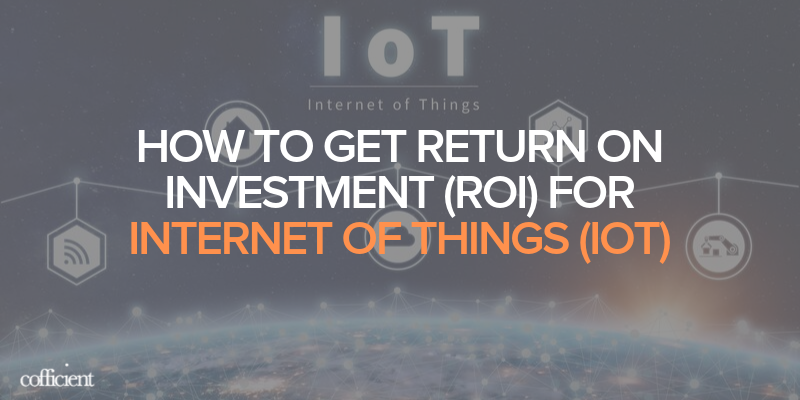
ROI for IoT
ROI for IoT
There is a huge potential for internet of things (IoT) but like most emerging technologies, there are always questions on whether or not you can make a true business case for it. While some reports forecast that nearly £6 trillion will be spent on IoT solutions over the next five years, for this to truly occur IoT needs buy-in at the enterprise level. Spending on IoT projects will only continue to climb if it helps companies realise true return on investment (ROI) and it can ultimately drive positive business outcomes.
IoT is seeing a strong adoption rate. We are seeing companies move from simply adopting internet of things technologies to actually putting it in position to drive their business. IoT is producing measurable results, and the top performers who are seeing the greatest results treat their IoT initiatives as business projects, not IT purchases.
The truth is, there is a strong business case for implementing systems using IoT today, as long as you look at it realistically. Here are nine easy steps to IoT success in optimising your operations:
Identify your business challenges
It is easy to get wrapped up in the bells and whistles of the technology and lose sight of what you ultimately need to achieve. The first step is identifying the top five to ten challenges you are trying to solve. What are the issues that are costing money, impacting customer service, or delaying deliveries? IoT is all about connected devices gathering, analysing, and sharing data. Identify the challenge that better data can solve and focus on those.
Calculate the potential ROI
Your business challenges may have a specific cost to your organisation. To sell this into your organisation you need to have a good idea what the ROI will be. Quantify what that cost is and determine what actionable information IoT can provide to alleviate the problem.
- How are you going to analyse the significant increase in data?
- What is your estimated return on investment?
Conduct a limited rollout as a proof of concept
Instead of jumping from concept to full implementation, conduct a limited pilot program as a proof of concept. For example, automating 10,000 square feet of the warehouse to prove it works? Then quantify the results.
- Is the data what you thought it would be?
- Did the pilot prove the concept was viable?
Partner with your IoT partner
Find a good IoT technology vendor and partner with them — especially at the proof of concept stage. A good supplier can provide industry and their own benchmarks to help establish your baseline ROI metrics for both the pilot and the complete rollout.
Make sure your data is actionable
Before you implement a complete solution, make sure your data is compatible with your company’s current systems and is actionable. You need to build a team from the business, IT and financial groups to understand the implications of a full IoT rollout. If the systems can’t work with the data, there’s no point in implementing IoT.
Manage Change
A good IoT implementation means significant change in work processes — and people do not like change. So while you may be excited about what IoT can deliver, there are a lot of people in your organisation who will view it with trepidation or outright hostility. Change is difficult, so you need to manage it and make everyone feel involved in the change. Get everyone on board, from shop floor to the executive offices, and make them feel part of the team.
Conduct thorough analytics
You’ve done a full implementation and everything is running smoothly, so your work is done, right? No, you need to do a thorough analysis of what you just did. Stop and measure against what you thought would happen. You need final analytics to prove you got it right — or maybe that it was even better than planned. This is an important step, don’t miss it.
Where can you take it next?
Once everything is connected via IoT, you can easily layer more on top. Look at other challenges in your organisation where having more actionable data could make a measurable difference. The incremental costs of adding to the system should be easy to justify as long as you, again, calculate the ROI up front and conduct the end analytics to provide proof of the benefits to your organisation.
Use your human resources more effectively
Finally, you have automated as many of the routine functions as possible and taken the mundane human interaction out of your business processes. Now is the time to use those people to do the higher cognitive functions they would rather do anyway. This should be part of your vision from the beginning. By freeing people from tasks that can be easily automated, you can better utilise them to provide the intelligence to even further improve your business processes.
Today, investing in IoT is a business development strategy that drives growth, profitability and depth in to what companies can offer their clients. The proof is in the ROI.
To talk more, get in touch



